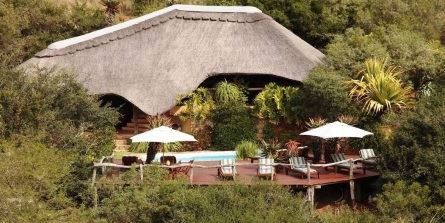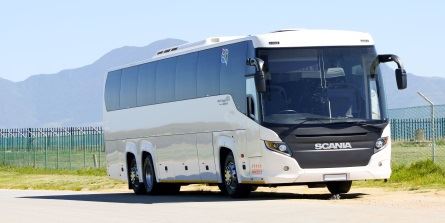A recovery in arrivals and continued demand driven in part by a weakened rand bring opportunities and challenges. Michelle Colman gathers views on the implications for the trade.
Last year’s recovery in arrivals seems set to continue into 2017, says Chris Anagnostellis, CEO of An African Anthology. “The increase in numbers always presents a number of challenges – of course these challenges can also be perceived as opportunities for some,” he says.
Meeting demand in certain market segments, and doing so without outpricing products against competing markets, is one of those challenges. Allied to this is sustaining the current growth, and keeping up with trends to maintain momentum.
For Paul de Waal, CEO of the content management and distribution system Wetu, DMC and tour operators will have to be on their guard against suppliers attempting to cut them out in 2017.
DMCs and tour operators, he says, have travelled the globe over a 25-year period, educating and encouraging people to travel to South Africa, developing relationships and growing old and new markets. “I think a healthy industry needs the DMCs and operators, so I worry in these times of plenty that suppliers are trying to cut them out,” he says. “I agree that suppliers should look for more direct business, but they must also support the trade, as it is a delicate balance.”
CEO of Tourvest Destination Management, Martin Wiest, has identified some less obvious bottlenecks the industry will have to come to grips with this year. They include increasing the pool of foreign language guides, keeping pace with accelerated technology development and encouraging skills development at multiple levels.
Christiaan Steyn, Marketing Manager of Drifters Adventours, a division of Tourvest, is quick to raise a time-old challenge for inbound travel, and not one to be taken lightly. “People will only travel if they consider the destination to be safe, and it will be vital for South Africa, and for that matter Southern Africa, to remain a safe destination in 2017. Any sign of political unrest or instability can cause problems for all inbound operators,” he says.
Game lodges: seasonality must be tackled

The Eastern Cape is currently enjoying a bumper season, but the seasonal shortage of capacity looms large for game lodges in the future. To this end, says Vernon Wait, Marketing Director of Lalibela Game Reserve, major reserves in the area have held early discussions on jointly marketing the province as a viable, year-round safari destination.
Remedying a lack of capacity in the game lodge sector, where environmental concerns are paramount and guest volumes must be controlled, is not just a matter of adding beds.
“If we have a single big challenge, it would be to educate the travel trade that our winters are not wet and that it is perfectly fine to be sending clients on safari to the Eastern Cape in the May-June-July-August period,” he says.
In other locations in the country, game lodges have been successful in extending their season, and winter is indeed now widely accepted a prime time for game viewing.
Ground transportation: Downsides of the exchange rate

While the weak rand will continue to spur inbound tourism this year, the downside for suppliers is higher fuel and food prices, contributing to increased operational costs. Particularly affected are wheels operators.
“Scheduled shuttle services would also be impacted, but not as significantly due to their ability to increase seat availability in accordance with the increased demand that a weak rand would bring,” says MD of Ashtons Tours, Safaris & Shuttles, Andrew Iles.
A further ‘punishment’ of the exchange rate is that it prevents ground transport operators from offering market rates in relation to capital expenditure. In addition, the inbound market is relatively small, and the volume of business does not support the regular acquisition of new vehicles. “So, we have to compromise by offering lower rates but with older vehicles, and rates on new models are inflated to counter any losses or lower income,” says Fanie van Zyl, MD of SA Coach Charters and Bus Rentals.
Van Zyl says the touring fraternity’s lack of understanding of the dynamics of ground transport, such as long distances, is a considerable challenge. “For example, a 21-day tour can cover up to 6 500km, an average of 310km per day. In some instances the same distance is covered in 17-19 days, increasing daily travel.”
He recommends that tour operators and consultants take a trip in a coach to understand the issues facing ground transport operators, such as road conditions, cross-border delays and weather. They should familiarise themselves with operating costs and pricing structures. “Margins are very low and some operators expect six-star vehicles for three-star prices. Ground transport is as important as the accommodation venue, yet more or the same time is spent in vehicles than sleeping in a bed.”
As an indication of the types of issues wheels operators face, the recent immigration delays experienced by inbound visitors at OR Tambo became a trial too for transfer companies, playing havoc with their schedules, causing one of them, Rhino Shuttles, to cut down on the number of transfers. Liby Nel, Co-Founder and Co-Owner, said drivers of high-roof minibuses had to park in the heat for extended hours, only to welcome irritable travellers into oven-like vehicles. The company had to invest in additional air-conditioning and pay higher parking fees.
All this, ahead of a lengthy trip in congested traffic on potholed and tar-weathered roads, contending with anything from trucks to stray animals to labour unrest. Nel points out that continual replacement of tyres and repair of windscreens and paint raises operating costs and vehicle downtime.






















